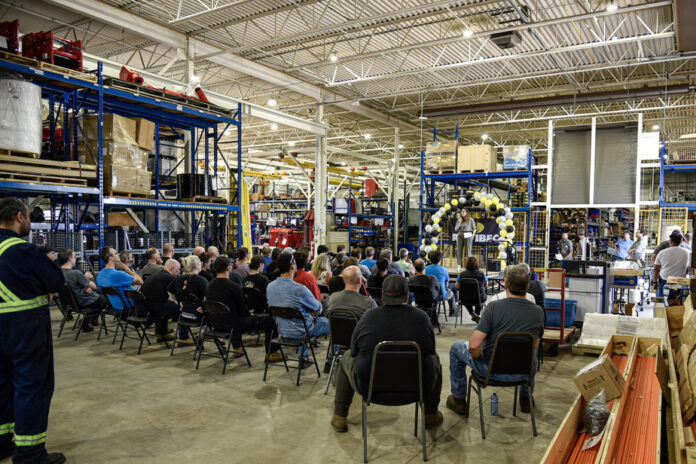In innovation, we are used to decision-makers preparing an idea and then implementing it within a company. At Rovibec, a Nicolet company specializing in agricultural automation, it’s the opposite. In January 2024, the SME will market a new product designed with the contribution of dozens of employees.
“We are a third generation company, and I am the next generation of the family. It was my grandfather Victor who created it in 1976,” explains Alexandra Rousseau, on the other end of the line.
Innovate, yes, but innovate with people, their proposals and their collaboration. This is somewhat the mandate that Rovibec gives itself – and in two ways.
The first is circumstantial. “In 2020, we wanted to stop having a kind of seasonality in our production. We wondered what could be manufactured on the same production line, but which would not be agricultural. We formed small teams of two: six or seven pairs, and I mixed people from all departments. »
For about three months, the small teams met once a week with the goal of advancing their product idea. Afterwards, “they gave oral presentations, like in high school, in the microbrewery next to us,” she says.
In the second phase, new teams of volunteers were formed, the most popular initial drafts were further developed and a winner emerged: the Rangerman, an automated robot designed to transport wooden pallets in manufacturing SMEs.
After being presented in industrial exhibitions in Jonquière then Terrebonne, it will be marketed at the beginning of next year.
“It would be wrong to say “such and such an employee gave such and such an idea”, but this process allowed us to mix ideas and benefit from collective intelligence,” says Alexandra Rousseau.
Second reason which makes innovation a collective affair at Rovibec: a permanent team works in research and development, within this SME in Centre-du-Québec. And out of 70 employees, there are around ten engineers for just one salesperson.
“Some finished school and stayed with us, others have been here for 25 years. But they have one thing in common: they invent agricultural machines, and they themselves are farmers. We create things for which we completely understand the meaning of the user, since we are one. »
The Rangerman, an automated guided vehicle (AGV), is based on the technology of the Ranger, a flagship product. It is a robot programmed to move around a dairy farm and push feed towards the cows, which replaces this usually manual task and which allows the cattle to feed adequately. Its speed of 100 feet per minute and its capacity to manage 2,500 heads makes the Quebecer a “world leader” in this area.
For the first five years, Rangerman’s sales goals are simple: “stay in Canada”, with possible expansion thereafter. A Bécancour dealer has already reached out to Rovibec, which now has the next few months to solidify its launch strategy.















